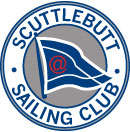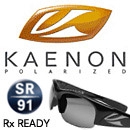
|
|
|
Scuttlebutt News: Why I Gave My A-Cat "Wings" by Ben Hall While everybody else was feverishly working on new hull shapes or sail designs in preparation for the 2007 A-Class Catamaran Worlds in Islamorada, FL, I decided to replace my mast/sail combination with a wing. Why? Because we can in this development class, where we all want to go faster. The wing is quite powerful in light conditions and very fast. I learned quickly that I can sail high and fast upwind, but initial downwind speed was off the pace. Then I loaned the boat to Glen Ashby before the pre Worlds. Glen trimmed the sail with less camber downwind, and the resulting increase in speed was encouraging. I also had my first capsize when practicing for the pre-Worlds. Sailing in 20 knots, I flipped during a jibe. The boat wouldn’t right in the typical into-the-wind position so Howie Hamlin suggested I point the masthead upwind and let the wing “lift” the boat. This worked a little too well! It was like a water start on a windsurfer, and luckily I held on the to crossbeams as the boat took off. Only a few small elements were damaged in the capsize. The wing was ready to go after minor carbon work. My A-Cat wing has two elements. The wing is slotted and both elements have twist control. The controls are simpler than the standard A-Cat rig. The wing has four controls: a 2:1 mainsheet, camber control (this adjusts flap angle from 0 to 35 degrees), twist for the main element, twist for the flap element. (The standard rig has: traveler, mainsheet, outhaul, downhaul, rotation, over-rotation, and diamond tension controls.) One big advantage is the ease of sheeting-in the wing off the line and around the leeward mark. I am trimmed with one pull while the conventional sail takes several. The length of the wing is 29 feet. The top two elements are a little over nine feet, and easily removable to facilitate transportation. The wing stores in a 21-foot trailer box that’s six feet wide and two feet high. The boat sits upside down on top of the box. I can tow the entire set-up with my mini-van. The weight of the wing is 52 lbs. The weight of all the stuff (mast, sail, battens, mainsheet system, boom and traveler) that I removed from my boat weighs 46 lbs. The all-up the boat should still be at the class minimum without corrector weights. The rig can go from trailer to ready-to-sail in 30 minutes. De-rigging the other day from rig up to in the box was 12 minutes. It does require a second person (the “wing sherpa”) to help lift the lower element out of the box and onto saw horses and also to put it into the box after de-rigging. To rig, the boat is flipped on its side, the wing is plugged into the step, the rigging is attached, the top two elements are installed, the boat is righted, the controls are rigged and you are ready to sail. All the controls can be adjusted while on the trapeze. Upwind, with both twist controls centered (no twist), the camber is set at about 15 degrees, so all you do is adjust the 2:1 mainsheet to optimize the angle of attack. In big breeze upwind it is very easy to de-power by simply easing sheet a bit. Downwind the flap angle (camber) is increased to 35 degrees and twist is induced in both elements by easing off the twist controls. Jibing and tacking are much easier because there is no boom to crawl under, and there’s no traveler or end-boom sheeting to go around with the tiller extension. In the search for a new source of speed, this seemed like a logical choice considering my line of work. Check back in mid-November for an update following the worlds. Debrief I sailed with the wing at the Worlds in November 2007 finishing 30th out of 100. I sailed the wing in a few Midwinter events with good results. Due to the extra time of rigging the mast and the inconsistent performance through the wind and wave conditions, I have gone back to a conventional rig/sail combination. I did not use the wing at the 2009 North Americans. The project was successful in that it met the weight goals set out in the beginning, it survived a capsize with no damage, it was reasonably competitive on a World level, it was a very cool build project and was a great experience to work with “wing nuts” Dave Hubbard (designer of the wing) and Steve Clark (moral and build advice support). It was one thing to build a complex lightweight structure and another thing on how to make it go fast on the racecourse. It also survived numerous heavy air days with no breakage. As an afterthought this project has shown that the standard rig development in the A-Cat is highly developed with a combination of carbon airfoil mast sections and modern sail fabric/design. Many have asked if you had it to do all over again, what would you do differently. I have a long list but I have yet to decide if I will have another go at it. (Click here for video.) Ben Hall is a principal of Hall Spars & Rigging. 
back to top |







|

